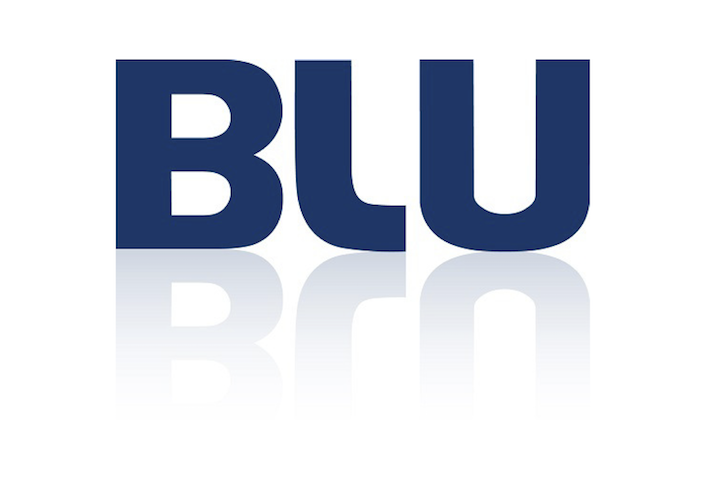This month:
Plenty to ponder by the pool
No summer break from political machinations.
Several markets begin to make their moves.
Rates expected to remain stubbornly low.
Open-minded investing advocated by advisers.
Featuring this month’s experts:
Those hoping for a summer respite from political tensions and worrisome headlines will have be disappointed, leaving investors plenty to ponder before the holiday period ends.
Here, leading wealth managers from our panel give their views on recent events and explain the key risks – and opportunities – investors should be thinking about.
Breaking up is always hard to do
Insights from:

Alex Brandreth, Deputy Chief Investment Officer at Brown Shipley, says:
The ongoing divorce settlement with the EU ramped up during July following the resignations of a number of Conservative party members. This saw David Davis resign as Brexit Secretary quickly followed by Boris Johnson resigning as Foreign Secretary, the catalyst being Theresa May’s Chequers deal.
To add insult to injury the Customs Union was then swiftly rejected by the EU, with chief EU negotiator Michel Barnier saying he will never accept her plan. Negotiations will continue over the next few months and, in our view, this will lead to an outcome as Theresa May’s weakness at home could strengthen her negotiating power since the Europeans will be aware that there is only so far they can push their agenda.
However, these developments have also increased the possibility of a ‘no deal’ scenario and if that event was to unfold then expect to see sterling weakening again, in a similar fashion to immediately after the referendum vote, albeit from a lower level and to a smaller extent.
Looking ahead, expect the Brexit momentum to remain over the next few months as we look to work to an agreement on key issues by October. As has been the case since the referendum, the price of sterling provides a good indicator of how things are developing; more recently it’s been on the back-foot as we hover around $1.30.
![]()
As has been the case since the referendum, the price of sterling provides a good indicator of how things are developing; more recently it’s been on the back-foot as we hover around $1.30
Trade Tensions took opposite paths in July. As Jean-Claude Juncker met with Donald Trump, it appears that the EU and US will work towards a trade agreement and repairing their relationship. In contrast, the US and China are heading for a messy break-up which looks set to continue, with the US increasing the number of tariffs applied to Chinese imports to $200bn from $50bn. In typical Trump style, he is really tightening the screw and has suggested he’d be willing to impose tariffs on all $500bn of Chinese imports. China has retaliated with like-for-like tariffs but crucially in July started to intervene to weaken their currency. Why does this matter? This ongoing theme is a headwind for global economic growth and adds a level of uncertainty to investors which is causing equity markets to remain volatile.
As we move into Summer holiday season expect a busier month than normal as the US plan to increase tariffs goes to the Senate with a decision expected at the end of August. Closer to home, the Bank of England has increased interest rates to 0.75% at the beginning of August, which is the highest level in the aftermath of the financial crisis.

Alex Brandreth
Deputy Chief Investment Officer at Brown Shipley
Markets begin to make their moves
Insights from:

Christian Armbruester, Chief Investment Officer at Blu Family Office, says:
August is always a funny month: as market participants take holidays, activity and volumes drop, making either for extremely dull reading or exasperated moves in thin trading. Luckily this year, we have plenty to get excited about as we look for further clues on the US elections, Brexit, tariffs, sanctions, and all manner of global trade.
Not surprisingly, the various markets have begun to make their moves, as they consider where we may be heading and hence price in future expectations. The global stock markets are stubbornly following the unabated US bull market and none of the potential tail risks have thus far had any impact on its record-setting pace.
The bond markets paint a slightly different picture. Whereas US interest rate rises have created a rather flat yield curve, with all the repercussions that may entail, the rest of the world is fighting other pressures. One has the feeling that a lot of that disconnect is reflected in the currency markets where we have seen increased volatility.
![]()
Whereas US interest rate rises have created a rather flat yield curve, with all the repercussions that may entail, the rest of the world is fighting other pressures
The commodity markets have come off their highs, with copper and oil down more than 10% versus recent highs. Gold has fared even worse, and any break below 1,200 would see further falls, from a technical viewpoint.
Where does it all leave us and what are the global markets telling us? There seem to be some rather large and entrenched trends that are increasingly at odds with one another and should make for an interesting rest of the summer and 2018.

Christian Armbruester
Chief Investment Officer at Blu Family Office
Uncomfortably high?
Insights from:

Dean Turner, Economist at UBS Wealth Management, says:
Last week, for the second time since the financial crisis, the Bank of England increased the base rate by 25 basis points. With the decision coming as no surprise, the debate quickly shifted to whether the hike was warranted.
Looking at the data, it would appear so. Growth, while not spectacular, looks OK. The labour market, meanwhile, looks much healthier, with unemployment at its lowest point since the 1970s and wages beginning to creep up. The reasonable conclusion is that the economy needs higher rates to ward off the threat of inflation.
Of course, even more important to monetary policy decisions than historical data are the forecasts. Barring any ‘hiccups’, the Bank of England expects the economy will grow at 1.75% over the next few years, and that in order to keep inflation on track, they will need to hike again in the next couple of years. If growth pans out as the BoE expects, then this judgement looks reasonable. However, the avoidance of ‘hiccups’ is certainly not guaranteed, with two areas of concern springing immediately to mind.
First, the global growth narrative is currently being threatened by trade tensions sparked by Donald Trump. While we see a resolution eventually being reached, the situation looks increasingly feels like it may get worse before it gets better.
![]()
For investors looking for the best way to grow wealth, while protecting it from the effects of inflation, the importance of diversifying across asset classes and geographies cannot be underestimated
Second, there is, of course, Brexit. The BoE’s forecasts are currently assuming a very smooth path to Brexit, with the UK moving into a transition arrangement next March and then seamlessly onto the final deal. Given this is government policy, the BoE has little choice but to take this as given, even though the government itself has started planning for a no-deal scenario.
Should neither of these concerns materialise, then we can expect more ‘gradual and limited’ rate rises in the future. But if not – and let’s not forget Carney’s reminder that the risks of a no deal Brexit remain ‘uncomfortably high’ – then this could well be the last we have heard from them on the subject for a while.
Given the fluid state of negotiations, expectations seem to be that rates will stay low for some time yet. For investors looking for the best way to grow wealth, while protecting it from the effects of inflation, the importance of diversifying across asset classes and geographies cannot be underestimated.

Dean Turner
Economist at UBS Wealth Management
Taking an open-minded approach
Insights from:

Thomas Becket, Chief Investment Officer at Psigma Investment Management, says:
Markets have continued to become increasingly bifurcated over the last few months, with US investments doing well and the rest of the world performing poorly. As you will know from recent Investment Bulletin contributions we have written, we see this as ultimately unsustainable in a globally connected world, even if the US is continuing to benefit from decent growth, government stimulus, positive corporate earnings and huge quantities of share repurchases from US companies.
The disconnect between US and global equity indices, as well as US and emerging market credit markets, has probably reached a point of elasticity and either US assets now start to weaken to confirm issues seen elsewhere in the world, or the clouds lift and other assets start to perform better.
![]()
At this time, we are pretty neutral on how this balance plays out in rest of 2018, even if we have started to tilt our portfolios to where we see value, in some emerging market asset markets
At this time, we are pretty neutral on how this balance plays out in rest of 2018, even if we have started to tilt our portfolios to where we see value, in some emerging market asset markets. Those steps have so far been tentative and we are not rushing to increase risk at this juncture, even if we are constantly reassessing all opportunities as they present themselves.
For now, we will continue with our diversified investment strategies, a sensible balance between US and emerging market investments and a very ‘open-minded’ approach to how we continue to manage our investment strategies in an environment in 2018 that is much more challenging than that we saw in the later stages of 2016 and 2017.

Thomas Becket
Chief Investment Officer at Psigma Investment Management
Important information
The investment strategy explanations contained in this piece are for informational purposes only, represent the views of individual institutions, and are not intended in any way as financial or investment advice. Any comment on specific securities should not be interpreted as investment research or advice, solicitation or recommendations to buy or sell a particular security.
We always advise consultation with a professional before making any investment decisions.
Always remember that investing involves risk and the value of investments may fall as well as rise. Past performance should not be seen as a guarantee of future returns.
